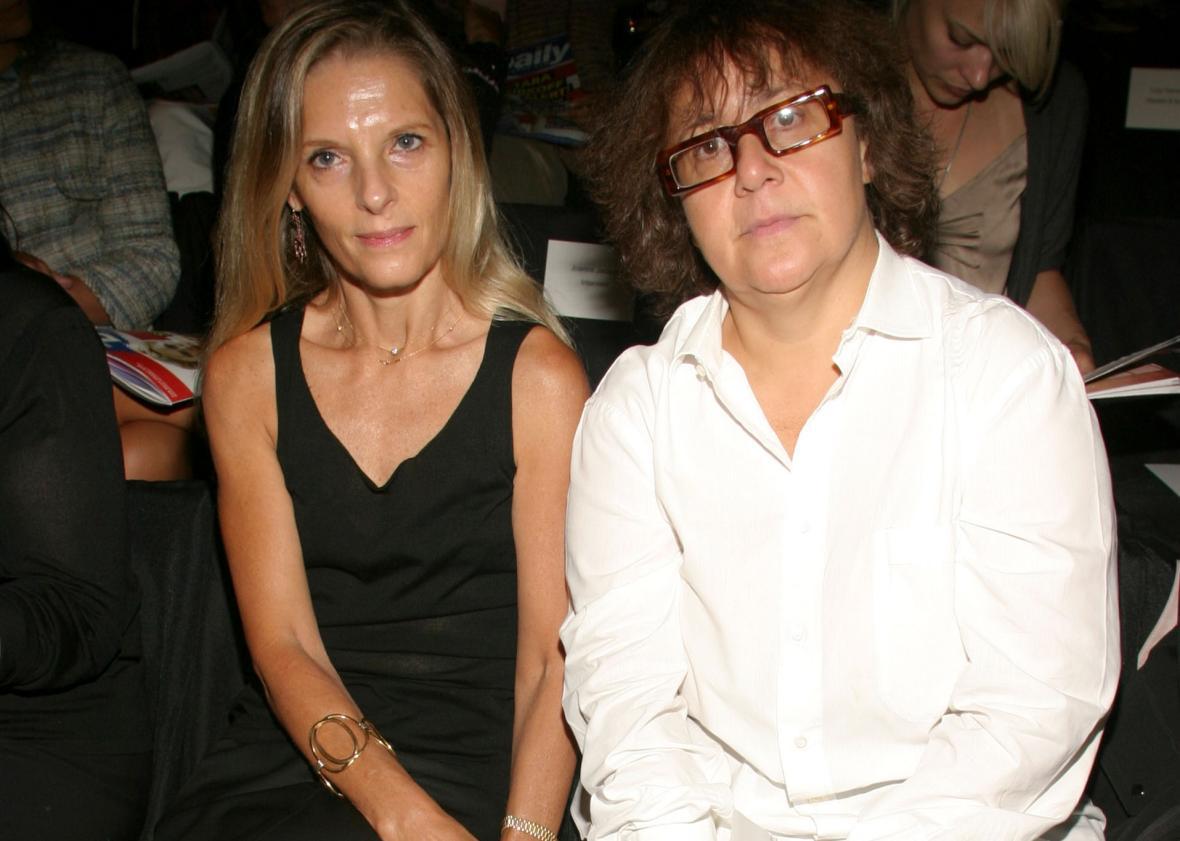This morning, the legendary editor and writer Ingrid Sischy died of breast cancer. She was just 63. An imposing and polarizing figure, Sischy was one of a handful of people who can truly be said to have changed the way we think and write about art, fashion, culture, and celebrity.
For those of us who grew up before the Internet, and grew up longing and hungry for a grittier and more glamorous world than the strip malls surrounding their high schools, what we mostly had were magazines. In the 1980s and 1990s, Sischy wrote and edited for the best of them, demanding attention for challenging artists like Laurie Anderson and Robert Mapplethorpe in a voice free of cant, pretention, or bombast. As editor of Artforum, and then editor-in-chief of Andy Warhol’s Interview for an astonishing eighteen years, Sischy made the avant-garde accessible to people whose nearest bookstore was as close to artsy opulence as we could get.
Born in Johannesburg in 1952 to a physician father and speech therapist mother, Sischy grew up in Scotland and the U.S. before graduating from Sarah Lawrence. She began her career in New York’s iconic shop Printed Matter—all endless shelves of handmade chapbooks and gorgeous exhibition tomes. At 27, she became editor of Artforum, where she transformed the voice of the High Art establishment into a megaphone for feminist and postmodern art; her very first issue talked up queer partners in life and art Gilbert and George, a kind of relationship she’d later mirror with her spouse Sandra Brant, with whom she’d serve as international editors of Italian, German, and Spanish Vanity Fair in the late 2000s.
While at Artforum, doing those things mere mortals only dream of—almost coming to blows with sculptor Richard Serra at an Anselm Kiefer opening while Janet Malcolm takes notes; commissioning an attack on MoMA for a racist and retrograde show one month and then printing lengthy curatorial responses the next—Sischy carved out space in the mainstream, eventually serving as art and photography critic for the New Yorker, where she wrote a definitive chronicle of queer artist Robert Mapplethorpe and the U.S. government’s censoring of his work. During her Interview tenure, the magazine perfected its imitable blend of surface worship, critical thinking, and inspired chatter. To outsiders, the world of Sischy’s Interview could look ridiculous, elitist, aspirational, and brilliant—and that was only looking at the cover. Who knows how many Sischy inspired to move to New York or become writers (or not to) with such inspiration.
And then there was Sischy’s increasingly prominent persona: the huge glasses and fitted shirts, that only-in-New-York mix of Fran Lebowitz’s butch bookishness and Diana Vreeland’s imperial whimsy. She was—as women in charge so often are—painted as domineering, bossy, distastefully ambitious. Perhaps she was, and what of it? The best of the thousands and thousands of pages she wrote and edited over the course of her too-brief life deserved the push.
Back in 1986, for Janet Malcolm’s New Yorker profile that described her fight with Serra, Sischy described the challenges of her own ambition:
“I sat there looking at this pile of articles that were ready to go into the issue, and I just couldn’t do it. I thought to myself, If this thing isn’t going to suck you up, if it’s not going to kill you, the only way you can do it—even though it will irritate everyone…[is to] do only what you know and feel secure about. The minute you do something that isn’t yourself, the minute you publish something you can’t stand, the minute you answer somebody faster than you want to, it’s all over. I’m positive it is.”
At a time when people are reading more than ever, when more people are eulogizing print media than are buying it, when editors announce they’ve calibrated the acceptable percentage of niceness their publications will embody while publishing transcripts of a bigot’s sex tape—at this moment, the loss of a figure like Ingrid Sischy really comes as a blow even to those of us who never knew her, but always wanted to.
In a New Yorker piece from 1991, Sischy wrote, “Beauty is a call to admiration, not to action.” Ingrid Sischy admired for a living, and fought for a world where such a thing was valued. That world lives on, even after her passing. A lot of us wouldn’t be here without her.
